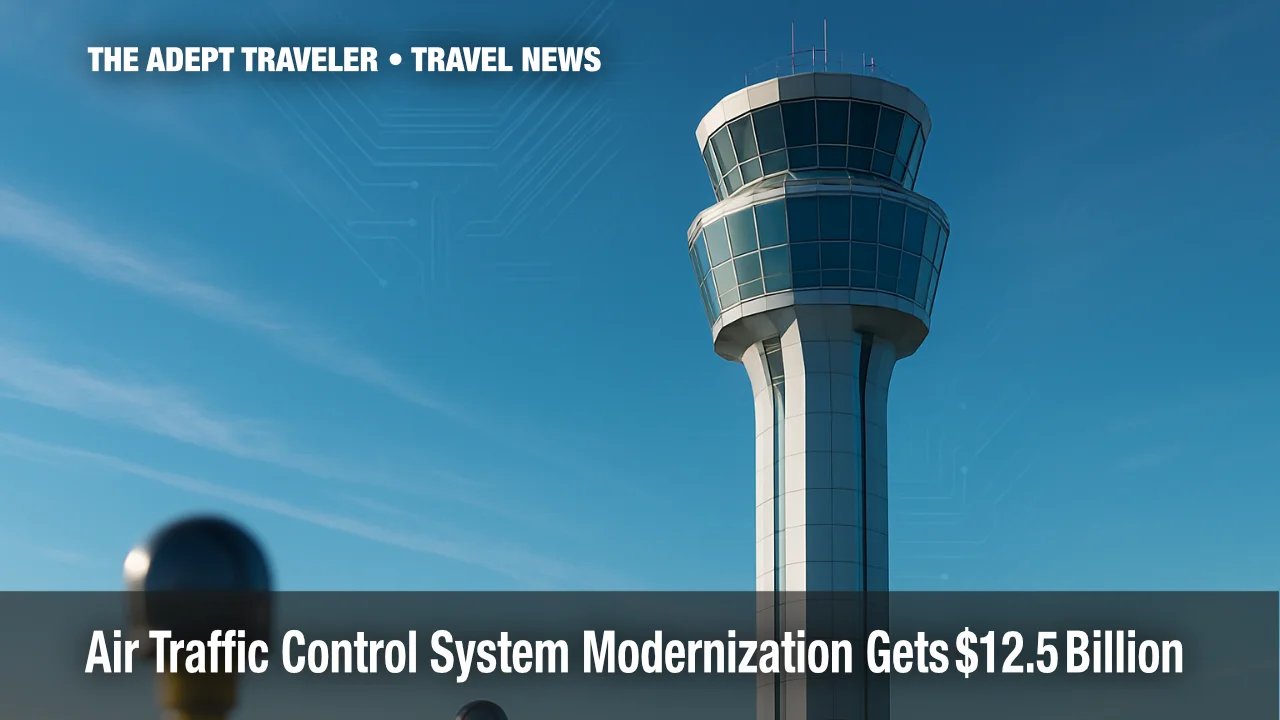Air Traffic Control System Modernization Gets $12.5 Billion Boost

Modernizing the U.S. air traffic control system-long plagued by outdated hardware and overworked staff-took a decisive leap forward this week when Congress cleared a $12.5 billion funding plan. The primary keyword air traffic control system modernization anchors a package that also enlarges Customs and Border Protection staffing and extends incentives for sustainable aviation fuel. Together, these measures aim to streamline airport operations, cut border wait times, and future-proof U.S. aviation through 2029.
Key Points
- Why it matters: Faster, safer flights by 2030
- $4.75 billion earmarked for telecom and tech upgrades
- 5,000 new CBP officers to trim entry queues
- Biometric exit-entry spending rises to $673 million
- Sustainable aviation fuel tax credit extended two years
Air Traffic Control System Modernization Snapshot - How It Works
The Department of Transportation's new National Airspace Modernization Plan replaces analog radar, copper wiring, and voice-only radio links with satellite-based surveillance, fiber-optic data lines, and secure digital communications. Controllers will manage traffic on a single cloud-hosted platform that fuses weather, routing, and aircraft-performance data in real time. Artificial-intelligence tools will predict separation conflicts minutes earlier than today's software, while advanced simulators will let trainees rehearse crisis scenarios without touching live traffic. The program's multiyear budget keeps dollars available through September 30, 2029, ensuring vendors and the FAA can sequence upgrades without service gaps.
Air Traffic Control System Modernization Background - Why It Matters
Near-miss reports and equipment failures have climbed since 2019, especially at busy hubs such as Newark Liberty International Airport. Controllers cite aging relays, chronic staffing shortages, and an explosion in private-jet and drone operations that strain 1970s-era hardware. Previous piecemeal fixes produced short-term gains but never tackled core infrastructure. The new bill's scale matches NextGen, the early-2000s initiative that introduced satellite navigation, yet goes further by updating cybersecurity, training pipelines, and facilities. Analysts estimate every one-minute reduction in average taxi or hold time saves airlines $180 million yearly and prevents 220,000 metric tons of CO₂ emissions, benefits that flow directly to travelers and the environment.
Air Traffic Control System Modernization Latest Developments
Congress bundled aviation, border, and clean-fuel provisions into a single "One Big, Beautiful Bill," which cleared the Senate earlier in the week before sailing through the House on Thursday. President Trump is expected to sign it within days.
Funding Breakdown
Of the $12.5 billion for the National Airspace Modernization Plan, roughly $4.75 billion will overhaul telecommunications infrastructure-swapping copper for fiber and enabling secure IP-based voice. Another $100 million purchases next-generation simulators that allow augmented-reality emergency training. The remaining funds cover facility retrofits, satellite-link fees, and workforce development grants. Money stays available until fiscal 2029, giving contractors predictable cash flow for phased rollouts.
Impact on Airports and Airlines
Starting this fall, the FAA will add temporary slots at Newark to compensate for earlier flow restrictions tied to April's equipment outage. United Airlines already trimmed 35 daily departures to ease congestion and plans to restore capacity once fiber upgrades finish in 2026. Airport operators expect shorter ground delays, especially during summer storms, because updated decision-support tools will recommend alternate routings in seconds instead of minutes. Smaller regional airports also benefit: new digital towers can centrally manage overnight operations, keeping routes open that airlines once deemed unprofitable.
Travel Industry Response
Airlines for America called the plan "a smart investment that benefits all Americans," lauding the long-term funding window. The U.S. Travel Association praised "bold, necessary investments" in both air traffic control and CBP hiring. Hospitality leaders welcomed tax provisions that avert rate hikes on small hotel owners battling inflation and softening demand. Clean-fuel advocates cheered the extension of the sustainable aviation fuel production credit, forecasting job growth across farming, refining, and logistics. Collectively, the sector views the bill as the most consequential aviation package since the 2012 FAA Modernization Act.
Analysis
For leisure and business travelers, the legislation promises tangible gains. Fiber-optic links will cut radar refresh lag from five seconds to one, enabling closer-but still safe-spacing on popular routes such as New York-Chicago. Faster sequencing should trim departure queues at slot-controlled airports, reducing missed connections and overnight delays that ripple through networks. New CBP hires aim to lower average peak wait times at top gateways from 90 minutes to about 45. Meanwhile, expanded biometric exit-entry programs could accelerate outbound boarding while strengthening overstays enforcement. Travelers concerned about climate impacts may appreciate the sustainable aviation fuel credit, which pushes airlines toward lower-carbon blends without adding new ticket surcharges. To stay ahead, passengers should enroll in TSA PreCheck or Global Entry, monitor carrier apps for flow control alerts, and review alternative airports when booking peak-season itineraries. For detailed airport-savvy strategies, see our guide to U.S. airport tips.
Final Thoughts
Air traffic control system modernization now has the funding muscle to move from whiteboard to runway. Travelers will not feel every improvement overnight, yet phased rollouts of digital towers, satellite surveillance, and larger CBP teams point to a smoother 2030 travel landscape. Book flights with longer connection buffers through 2026, sign up for trusted-traveler programs early, and keep airline apps updated to capitalize on faster rebooking tools as the new network comes online.
